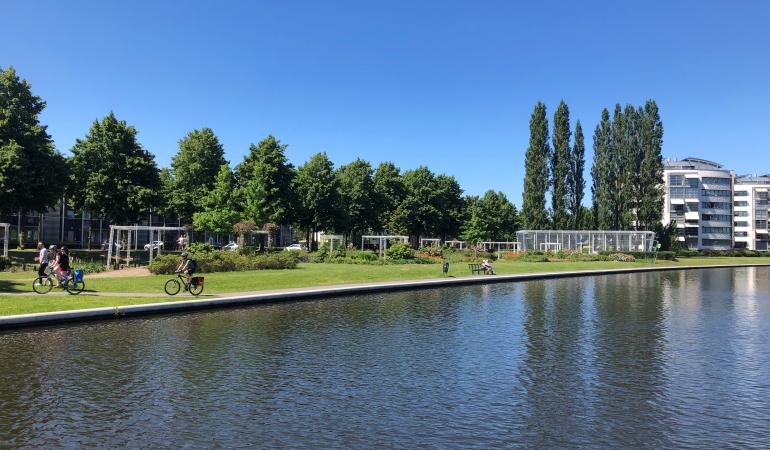
Infectious diseases should be a key element in designing the environment in which people live and work. Changes to the living environment can unintentionally increase the risk of spreading pathogens. This can be prevented through the development of instruments with which municipalities, for example, can assess the risk of an infectious disease. In addition, platforms must be set up in which relevant parties can keep one another informed on time.
The government of the Netherlands is working to ensure a healthy living environment for the Dutch population. Water and green spaces are vital to the health of citizens as well as in relation to mitigating the effects of climate change. Local authorities provide a green environment to encourage people to exercise more and spend more time in nature. In addition, water systems are being constructed in cities both to cool the environment and to collect rainwater. Furthermore, sustainability is playing an increasingly important role and it is vital that people use water and other natural resources efficiently.
Side effects
Changes to the environment in which people live and work can also have undesirable side-effects. Although a green environment is essential, people are at risk of being bitten by ticks, for example, or of falling ill if they go swimming in water that is not intended for such purposes, such as canals in cities. Water quality is not monitored in these waters and can deteriorate unnoticed.
In 2017 and 2018, a number of plants used to recover biogas from wastewater caused an increase in the number of Legionella infections. This subsequently led to additional research into the risks of high-risk plants and to the drafting of an assessment framework for their use. This assessment framework is an example of an instrument that municipalities can use in respect of the living environment. Other available tools include the Tick Radar (Tekenradar) and the Water Quality Check (Waterkwaliteitscheck).
Accounting for infectious diseases
When designing or redesigning the human environment, it is crucial to consider the impact specific measures may have on spreading infectious diseases. In addition to the ongoing monitoring and detection of infectious diseases, RIVM also wishes to move towards a system in which instruments and platforms are used to prevent or mitigate novel risks.
The report entitled ‘Changes to the design of the human environment necessitate urgent focus on infectious diseases’ contains information for practitioners and policymakers in government working on a healthy living environment. RIVM wishes to encourage policymakers to have instruments developed that allow municipalities to assess the risk of infectious diseases following changes in the living environment. A second recommendation is for platforms to be set up where the relevant parties can keep one another informed and focus specifically on infectious diseases within the human environment.